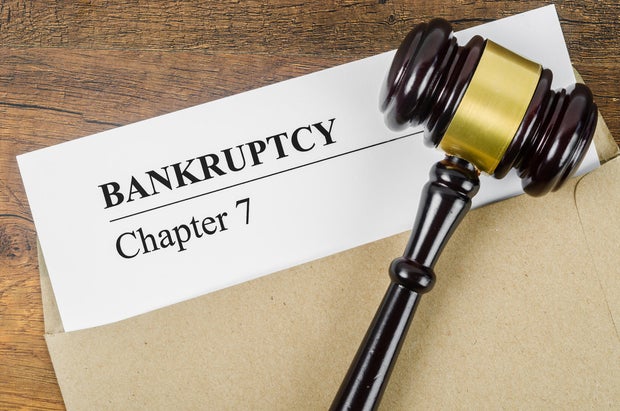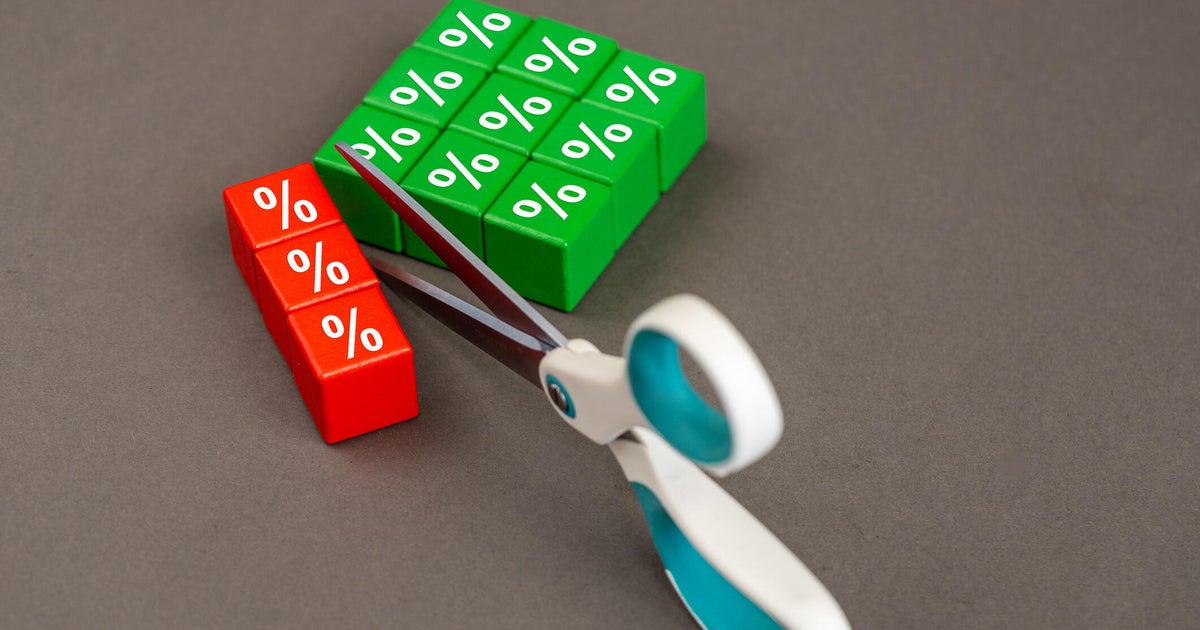 Whether or not it's hard to get approved for Chapter 7 bankruptcy depends heavily on your financial situation.
Getty Images/iStockphoto
Whether or not it's hard to get approved for Chapter 7 bankruptcy depends heavily on your financial situation.
Getty Images/iStockphoto
When the financial troubles pile up faster than you can manage them, as they are for many borrowers in today's high-rate, inflationary environment, filing for bankruptcy can feel like the only way out. There are several types of bankruptcy you can pursue, but Chapter 7 bankruptcy, often called liquidation bankruptcy, is the bankruptcy option that offers to wipe out most unsecured debts in just a few months. And, it sounds straightforward enough, at least on the surface: File the paperwork, attend a hearing and emerge debt-free on the other side. But there's a catch that can stop you before even begin: qualifying for it.
While you may be falling behind on bills or maxing out your credit cards to stay afloat right now, Chapter 7 bankruptcy isn't automatically available to everyone who needs it. The rules for approval have been tightened over the last couple of decades, creating hurdles that are designed to prevent abuse of the system. The result is a somewhat complicated approval process that hinges largely on your income and expenses. And, while some people sail through easily, others are denied and find themselves forced to consider the alternatives.
So what determines whether you'll get approved for Chapter 7 bankruptcy? The answer depends on several factors, and understanding these requirements upfront can save you time and money, as well as the disappointment of a rejected filing.
Find out what steps you can take to get rid of your high-rate debt today.
Is it hard to get approved for Chapter 7 bankruptcy?
Whether or not it's hard to get approved for Chapter 7 bankruptcy depends on your financial situation. For many people, qualifying is relatively straightforward, but others face genuine obstacles that can block their path to relief with this type of bankruptcy.
The biggest hurdle is generally the means test, which compares your income to your state's median income level. If your household income falls below the median for your state and household size, you generally pass the means test automatically and can proceed with Chapter 7. These median income figures vary significantly by location, though. For example, a single person in Alabama might have a different threshold than someone in California.
It gets even trickier if you earn above your state's median income. You're not automatically disqualified if that's the case, but you'll need to complete the second part of the means test, which examines your disposable income after allowed expenses. The calculation deducts certain living expenses, secured debt payments and other permitted costs from your income. If you have little to no disposable income left over, you can still qualify for Chapter 7. However, if the math shows you have enough disposable income to repay a portion of your debts, the court may determine you should file for Chapter 13 instead.
Bankruptcy courts look at other factors beyond income, too. If you've filed for bankruptcy recently — within eight years for Chapter 7 or within certain timeframes for other chapters — you generally won't qualify. There's also a requirement to complete credit counseling from an approved agency within 180 days before filing. Missing this step will get your case dismissed.
The court scrutinizes your filing for signs of abuse as well. Did you rack up luxury purchases right before filing? Take out cash advances shortly before declaring bankruptcy? These actions can raise red flags and lead to denial. Similarly, if the court believes you're hiding assets or being dishonest on your paperwork, your case likely won't survive.
That said, approval isn't particularly difficult for most people with modest incomes and straightforward financial situations. The majority of Chapter 7 filers successfully discharge their debts. However, higher earners, those with complex financial situations or anyone who's made questionable financial decisions right before filing may face serious challenges.
Learn about the debt relief options you can use to avoid bankruptcy here.
Alternatives to consider if your Chapter 7 bankruptcy application is denied
You're not out of options if you don't qualify for Chapter 7, though the alternatives come with their own trade-offs.
- Chapter 13 bankruptcy: Instead of liquidating assets, you'll enter a three- to five-year repayment plan based on your disposable income. You won't eliminate all your debt immediately with a Chapter 13 bankruptcy, but you'll consolidate payments into one manageable monthly amount, and whatever remains unpaid at the end gets discharged. This option works well if you have steady income but earn too much for Chapter 7.
- Debt settlement: Settling your debt involves negotiating with your creditors to pay less than you owe, typically in a lump sum. This strategy often reduces debts by 30% to 50% or more, so the savings can be substantial. There are downsides, though, including significant credit damage and potential tax consequences, since forgiven debt may be considered taxable income.
- Credit counseling and debt management: This approach can offer a structured repayment plan and lower costs without bankruptcy. When you enroll in credit counseling, the agency works to negotiate lower interest rates and fees with creditors and consolidates your payments into one monthly obligation. You'll still repay the full amount, but with better terms.
The bottom line
Getting approved for Chapter 7 bankruptcy isn't necessarily hard, but it's not automatic either. The means test serves as the primary gatekeeper, and most people with below-median income clear this hurdle without issue. If you earn above the median, your approval depends on a more detailed financial analysis.
Being honest about your situation and understanding the requirements before you file can help you make the right decision for your finances. And, consulting with a bankruptcy attorney can clarify whether you're likely to qualify and help you navigate the paperwork correctly. If Chapter 7 isn't an option, other debt relief strategies exist. They just involve different timelines and commitments. The worst thing you can do, though, is nothing at all.
Edited by Matt Richardson


















































